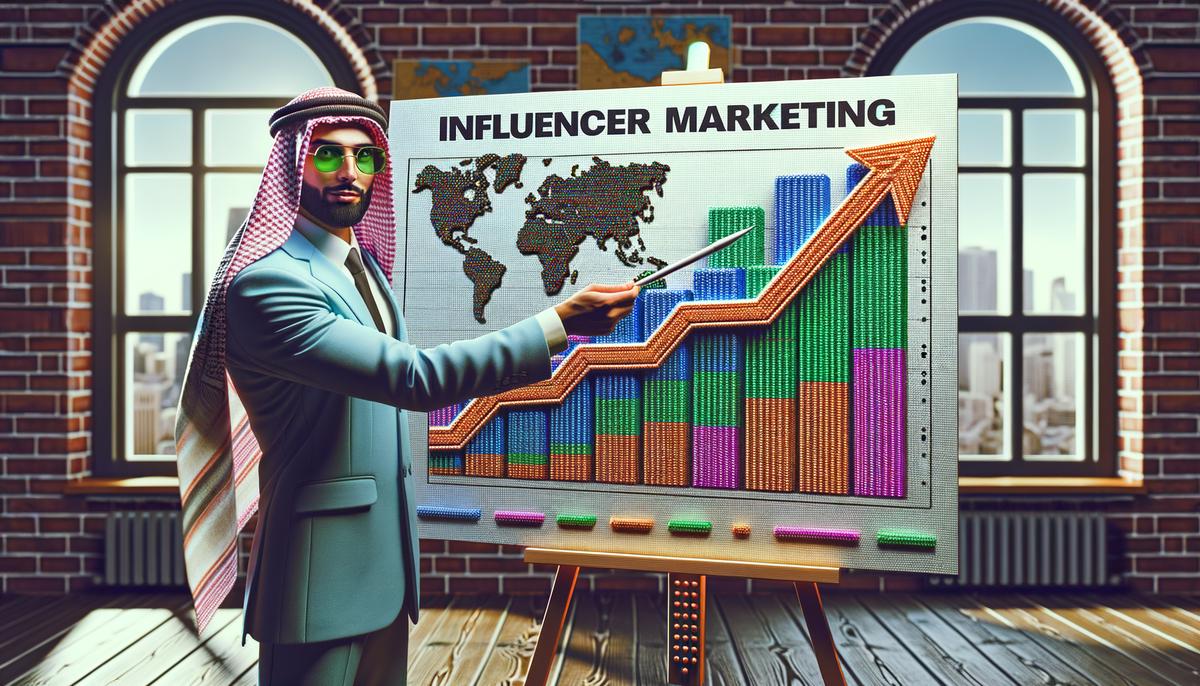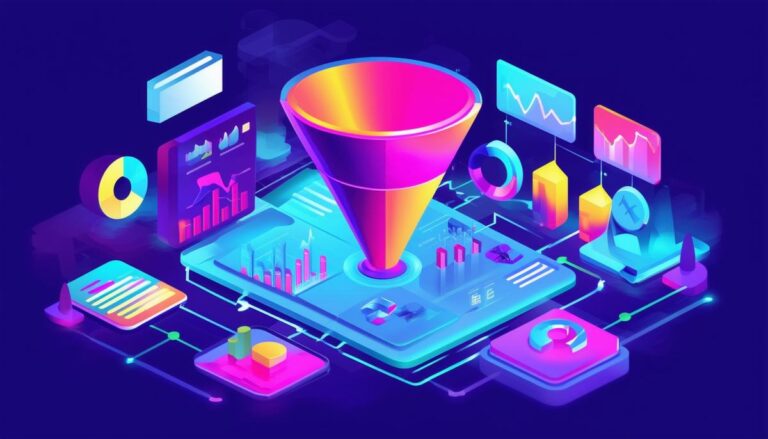In today’s fast-paced digital world, the way brands connect with their audience is evolving. Influencer marketing has emerged as a key strategy, bridging the gap between companies and consumers in a more personal and engaging manner. This article explores the ins and outs of influencer marketing, shedding light on why it’s becoming an essential tool for brands looking to amplify their presence and connect with their audiences more effectively.
Understanding Influencer Marketing
Influencer Marketing: How It Powers Up Your Brand
Ever scroll through your social media feeds and see your favorite online personalities talking about products they love? That’s influencer marketing in action, and it’s become a big game-changer in the world of advertising. Let’s dive into what influencer marketing is and how it works to give brands a boost.
What Is Influencer Marketing?
Think of influencer marketing as the cool cousin of traditional advertising. It’s where companies team up with popular social media users, or ‘influencers,’ to promote their products or services. These influencers have dedicated followings on platforms like Instagram, YouTube, Twitter, or blogs, making them powerful allies in the marketing world.
Why? Because people trust recommendations from individuals they admire or follow more than traditional ads. It’s like if your friend recommends a great pizza place—you’re more likely to try it out, right? Influencers have that kind of pull with their audience.
How Does It Work?
- Choosing the Right Influencer: Brands look for influencers whose followers match their target audience. It’s not just about big numbers; an engaged audience matters more. After all, an influencer with 1,000 engaged followers can be more effective than one with 10,000 disengaged ones.
- Collaboration and Creativity: Once a brand finds its perfect influencer match, they collaborate on content. This could be anything from a simple product mention in a blog post to a full-on video review on YouTube. The key is authenticity—the influencer needs to seamlessly integrate the product into their usual content so it doesn’t feel forced.
- Tracking Success: With any marketing effort, measuring the impact is crucial. Brands track metrics like engagement rates, clicks, and ultimately, sales, to see how effective the campaign is. Sometimes, they use unique discount codes or tracking links to measure how many people are taking action based on the influencer’s recommendation.
Why It’s a Win-Win
For brands, influencer marketing opens the door to a more genuine form of advertising. They get to tap into a ready and engaged audience, often resulting in better conversion rates than traditional ads.
Influencers, on the other hand, get to partner with brands they believe in (and get compensated for it), which adds value for their followers. It’s a cycle of trust and authenticity that benefits everyone involved.
The Secret Sauce: Authenticity and Trust
The real magic of influencer marketing lies in its authenticity. Influencers have built their platforms based on their genuine interests, personalities, and the trust of their followers. When they recommend a product, it comes across as a recommendation from a friend rather than a sales pitch.
That trust is what makes influencer marketing so effective. A well-chosen influencer can introduce your product to a new audience in a way that feels natural and genuine. And in today’s ad-saturated world, that’s a powerful thing.
In a Nutshell
Influencer marketing is much more than just a marketing fad; it’s a dynamic and effective way to connect with potential customers in a more personal and authentic manner. By leveraging influencers who align with their brand values and audience, companies can achieve remarkable results. Whether you’re a startup looking to gain traction or an established brand wanting to inject some freshness into your marketing strategy, considering influencer marketing could be a smart move.

Strategies for Selecting Influencers
Now that we’ve laid the groundwork understanding influencer marketing’s basics and its core benefits, let’s dive deeper into fine-tuning our selection process to ensure we’re partnering with the ideal influencers for our brand’s unique needs. After all, the right match can amplify our message, while the wrong one can divert our course. Here’s how to navigate these waters with precision and care.
Understanding Influencer Specialty AreasFirst off, each influencer has a niche – a special area they excel in, whether it’s fashion, technology, fitness, or gourmet cooking. It’s crucial to pick someone who not only aligns with your brand’s industry but also shares similar values and ethos. This compatibility ensures that the content created feels natural and genuine, rather than forced or off-brand. Imagine a tech influencer trying to promote baking tools; it just wouldn’t compute with their audience. So, dig into their past content to gauge if their specialty truly aligns with what your brand stands for.
Evaluating the Quality of EngagementWhile numbers do matter, the quality of interaction an influencer has with their audience trumps sheer volume. Engagement – comments, shares, and the overall dialogue between the influencer and their followers – speaks volumes about the influencer’s capability to genuinely connect and, by extension, influence. An influencer with a smaller, but highly active and engaged audience can yield better results than one with a vast, but passive follower count. Peek into their comments section; does it feel like a vibrant community or a ghost town?
Content Consistency and ProfessionalismA glance through an influencer’s social media feed should give you a clear idea of their aesthetic, the consistency of their content, and their professionalism. Consistency is key in maintaining audience interest and trust. An influencer who sporadically posts or drastically swings in content style might not be the best long-term partner for your brand. Assess their content cadence and quality. Is their feed aesthetically pleasing and does it maintain a consistent theme? This reflects on their dedication and reliability, crucial traits for a mutual partnership.
Compatibility with Your Campaign Goals
Different influencers are suited for different types of campaigns. Some excel in creating buzz and excitement, perfect for product launches or event promotions. Others are more adept at storytelling, suitable for in-depth brand narratives or social cause affiliations. Clearly defining your campaign objectives at the onset will help in selecting an influencer whose strengths can best meet your brand’s specific needs. Think about what you truly want to achieve with this partnership – increased brand awareness, more website traffic, or boosted sales – and ensure the influencer’s skills and track record align.
Responsiveness and Willingness to CollaborateFinally, the influencer’s responsiveness and openness to collaboration are crucial. Influencer marketing is a two-way street; the partnership should be mutually beneficial and cooperative. Their willingness to engage in open communication, provide timely responses, and express enthusiasm for your brand marks the foundation of a successful collaboration. Before committing, initiate conversations to gauge their responsiveness and attitude towards collaboration. This initial interaction can be very telling of the potential working relationship.
By incorporating these considerations into your influencer selection process, you’ll be better equipped to find a partner who not only amplifies your brand’s message but also resonates with your audience in a meaningful and impactful way. Remember, influencer marketing goes beyond mere transactions; it’s about forging relationships that bring mutual value and growth.

Measuring Campaign Success
Alright, let’s dive into the nitty-gritty of tracking the success of your influencer marketing campaigns. This part is like the cherry on top of your influencer marketing sundae—it’s super important and oh-so-satisfying when you get it right. Keeping tabs on how well your campaigns are doing is crucial, because hey, you want to make sure you’re getting a bang for your buck, right?
First things first, let’s talk about the magic of hashtag tracking. Imagine throwing a party and wanting to know who showed up because of the flashy invites you sent out. Hashtags are your invites in the digital world. By creating a unique, campaign-specific hashtag, you can easily track who’s talking about your brand and how far the conversation spreads. It’s like having a secret radar that shows you where your message is landing.
Next up, affiliate codes and links – your best pals for tracking direct sales. These little guys are the bridge between your influencer’s content and your sales numbers. By assigning unique codes or links to your influencers, you can track exactly how many sales each influencer generates. It’s like having a personal shopper for each influencer, telling you what’s flying off the shelves thanks to their shoutouts.
Engagement rate is the heartthrob of influencer marketing. Likes, comments, shares—you name it. This metric shows you how much people are actually into the content your influencers are creating. It’s like having a popularity meter for every post, giving you the lowdown on what’s hot and what’s not. A high engagement rate usually means your influencer’s audience is genuinely interested, and that’s gold in the marketing world.
Here comes the cool part—using social media analytics tools. These tools are like your campaign’s personal diary, keeping track of all the juicy details. They can show you not just who’s engaging with your content, but also how your content is driving traffic to your website or increasing your brand’s overall social media presence. It’s like having a little birdie that tells you all about the good, the bad, and the viral.
Lastly, don’t underestimate the power of direct feedback. Chatting with your influencers and asking them what kind of responses they’re getting can give you insights no tool can. Sometimes, a simple conversation reveals the most about the effectiveness of your campaign.
Remember, tracking the success of your influencer marketing campaigns isn’t just about numbers—it’s about understanding the story behind those numbers. It’s about figuring out not only if you reached your audience, but also if they really listened. Armed with these tracking tips, you’re all set to make your influencer marketing campaigns shine even brighter. So go ahead, measure your success, and keep making that marketing magic happen!

Ethical Considerations and Best Practices
Following these guidelines, let’s dive into the ethical considerations that absolutely need to be on your radar if you’re playing in the influencer marketing sandbox. Remember, as spicy and fun as influencer campaigns can be, keeping it ethically sound is like adding just the right amount of salt to your dish – it makes everything better.
1. Transparency is King (or Queen)
Ever stumbled upon an influencer post and spent fifteen minutes trying to figure out if it’s an ad or not? Yeah, don’t be that brand. The Federal Trade Commission (FTC) isn’t playing games when it says disclosures need to be clear and conspicuous. Influencers should always tag content with #ad, #sponsored, or any hashtag that screams “This is a promotion!” Making sure this happens isn’t just good practice; it’s a law.
2. Be Real in the Feel
We’re talking about authenticity, folks. In a world where we’re bombarded with thousands of ads, consumers have developed the superpower to sniff out when something smells fishy. This means influencers shouldn’t morph into a walking billboard spouting off ad copy. Instead, encourage them to weave their genuine experience with your product into their content. It’s more relatable and, yep, more ethical.
3. Respect Privacy
Just because you can, doesn’t mean you should. This ancient proverb (not really ancient) applies perfectly to user privacy. In influencer campaigns, especially those involving giveaways or user-generated content, privacy can get tricky. Always, always, ensure you have explicit consent before repurposing user content in campaigns. Plus, steer clear from creepy data practices that might make Big Brother proud.
4. Avoid the Fake It ’til You Make It Trap
Fake followers, fake engagements, fake likes – it’s the dark trio of influencer marketing. These practices not only distort campaign results but also mislead brands and audiences alike. When choosing influencers, do a little detective work to ensure their followers are flesh and blood humans who genuinely care about what the influencer has to say. Tools and platforms are available to help you spot the fakers, so use them.
5. Diversity and Inclusivity Aren’t Just Buzzwords
They’re essential, full stop. Inclusivity in influencer marketing isn’t just about checking a box; it’s about reflecting the beautiful mosaic of society. Campaigns should strive to include diverse voices and faces, offering a variety of perspectives and experiences. It not only enriches the campaign but also resonates with a broader audience – ethically and effectively.
6. No to the Hard Sell
Remember, influencer marketing is like a salsa dance – it should feel natural and fluid, not like a robot programmed to hard-sell at every turn. Yes, the ultimate goal might be to drive sales, but if every post screams “BUY NOW,” it’s a turn-off. A balanced approach that offers value, entertains, or educates, supplemented with occasional product plugs, tends to be more palatable – and ethical.
These bulleted bits of wisdom aren’t just a nice-to-have; they’re must-haves in your influencer marketing playbook. Sticking to these ethical considerations ensures your campaigns not only sparkle with the potential to go viral but do so in a way that’s respectful, responsible, and, ultimately, more rewarding. So, let the influencer magic happen – ethically, of course.

Future Trends in Influencer Marketing
As the digital landscape evolves, the future of influencer marketing is becoming more exciting and innovative than ever before. With new technologies and platforms emerging, brands and influencers alike need to stay ahead of the curve to maintain relevance and engagement with their audiences. Here are some of the future trends shaping the influencer marketing landscape that you need to watch out for.
1. Rise of Micro and Nano-Influencers:
While big names have always dominated the scene, there’s a growing trend towards leveraging micro and nano-influencers. These individuals might have smaller followings, but their audiences are highly engaged and loyal. Brands are realizing the value of partnering with these influencers for more targeted and authentic campaigns. So, expect to see more collaborations with these powerful, yet smaller, players in the market.
2. Video Content Takes the Lead:
With the surge of platforms like TikTok, Instagram Reels, and YouTube Shorts, video content is becoming the king of engagement. Influencers creating short, engaging, and creative videos are seeing massive success. Brands are keen on diving into this trend, recognizing that video content can generate more shares, comments, and overall interaction than static posts. Get ready for video content to dominate your feeds even more in the coming years.
3. Virtual and Augmented Reality Experiences:
As technology advances, so does the way we experience content. Virtual Reality (VR) and Augmented Reality (AR) are setting the stage for a whole new level of interaction. Influencers could host virtual meet-ups, give product demonstrations in a 3D space, or even take their followers on immersive journeys without leaving their homes. This innovation opens up endless possibilities for creative collaborations and interactive advertising campaigns.
4. Focus on Sustainability and Social Responsibility:
Today’s consumers are more conscious about the planet and societal issues than ever before. They appreciate influencers and brands that share these values. In response, we’re seeing a shift towards sustainable practices, ethical campaigns, and support for social causes within influencer marketing. This authentic approach not only resonates with audiences but also builds trust and loyalty in the long run.
5. Enhanced Data Analytics and AI:
Data analytics and Artificial Intelligence (AI) are becoming crucial tools in informing influencer marketing strategies. Brands can leverage advanced analytics to find the perfect influencer match, predict campaign success, and optimize their marketing efforts in real-time. AI can also help identify emerging trends, track campaign performance, and even predict future consumer behavior, making campaigns more efficient and effective.
6. Personalization at Scale:
One size does not fit all when it comes to influencer marketing. Personalization is key to resonating with different segments of your target audience. Thanks to AI and data analytics, brands can now customize campaigns to match the preferences and behaviors of their audience segments. This means more relevant content from influencers, tailored to the interests and needs of their followers.
The future of influencer marketing is both dynamic and promising, with trends that emphasize authenticity, creativity, technology, and social responsibility. As we move forward, staying adaptable and innovative will be crucial for brands and influencers aiming to make a lasting impact. Whether you’re a brand looking to launch your next campaign or an influencer ready to take your content to the next level, keeping an eye on these trends will ensure you’re not just keeping up but leading the charge in the ever-evolving world of influencer marketing.

As we’ve explored the multifaceted realm of influencer marketing, it’s clear that this strategy holds a significant place in today’s advertising landscape. Its power to forge authentic connections, drive engagement, and create meaningful interactions makes it invaluable for brands aiming to thrive in the digital age. By staying informed about the latest trends, ethical practices, and strategic approaches, brands and influencers alike can unlock the full potential of influencer marketing, ensuring their message not only reaches but resonates with their intended audience. The future of influencer marketing is bright, and those who embrace its dynamic nature will undoubtedly reap its benefits.


